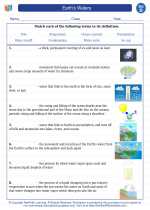Earth's Waters -> glacial activity
Formation of Glaciers
Glaciers form when the accumulation of snow exceeds its melting and sublimation over many years, causing the snow to compress into ice. Over time, this ice becomes thick enough to flow under its own weight, forming a glacier.
Erosion by Glaciers
Glaciers can erode the land through processes like plucking and abrasion. Plucking occurs when the glacier's ice picks up rocks and sediment as it moves, while abrasion happens as the glacier scrapes and grinds against the underlying rock, wearing it down.
Deposition by Glaciers
As glaciers move, they carry a substantial amount of sediment and rocks. When the glacier melts or recedes, it deposits this material, forming landforms like moraines, drumlins, and eskers. These deposits can dramatically alter the landscape.
Impact on Landforms
Glacial activity has shaped various landforms, including U-shaped valleys, fjords, and cirques. These features bear the hallmark of glacial erosion and deposition, showcasing the powerful influence of glaciers on the Earth's surface.
Study Guide
Here are some key points to remember about glacial activity:
- Glaciers form from the accumulation and compaction of snow over time.
- Erosion by glaciers occurs through plucking and abrasion.
- Deposition by glaciers leads to the formation of moraines, drumlins, and eskers.
- Glacial activity shapes landforms such as U-shaped valleys, fjords, and cirques.
It's important to understand the processes and impacts of glacial activity, as it provides valuable insights into the Earth's geological history and the formation of landscapes we see today.
[Glacial Activity] Related Worksheets and Study Guides:
.◂Science Worksheets and Study Guides Fourth Grade. Earth's Waters
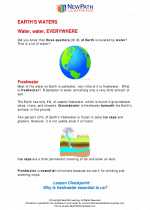
 Worksheet/Answer key
Worksheet/Answer key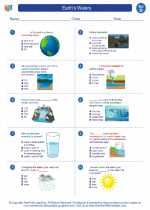
 Worksheet/Answer key
Worksheet/Answer key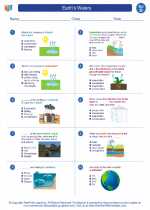
 Worksheet/Answer key
Worksheet/Answer key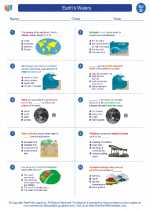
 Vocabulary/Answer key
Vocabulary/Answer key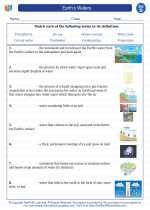
 Vocabulary/Answer key
Vocabulary/Answer key